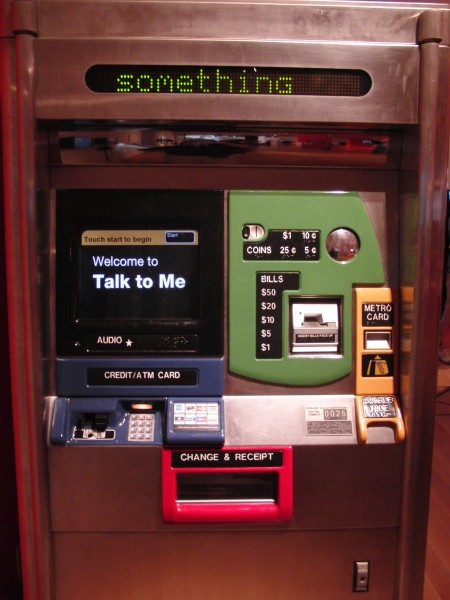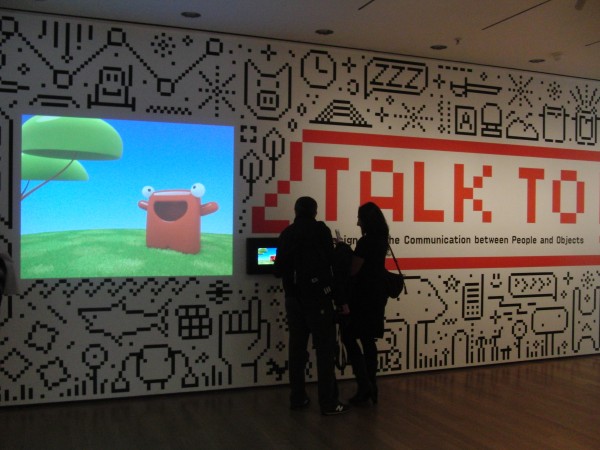Museum of Modern Art
11 West 53rd St. between Fifth & Sixth Aves.
Wednesday – Monday through November 7, $25
212-708-9400
www.moma.org
On October 14, Apple released the iPhone 4S, the latest iteration of the handheld device that reached a whole new synthesis of design, technology, and communication with Siri, which responds to voice commands with a voice of its own. Although not part of MoMA’s interactive “Talk to Me: Design and the Communication between People and Objects,” the iPhone is a prime example of how the relationship between man and machine has changed over the decades. “The bond between people and things has always been filled with powerful and unspoken sentiments going well beyond functional expectations and including attachment, love possessiveness, jealousy, pride, curiosity, anger, even friendship and partnership,” writes senior curator Paola Antonelli in the exhibition catalog, which also contains essays by Jamer Hunt, Alexandra Midal, Khol Vinh, and Kevin Slavin. Indeed, there is surprising warmth to the exhibit, which invites visitors to explore not only the many items’ visual splendor but their interactivity as well. People are greeted at the entrance by Yann Le Coroller’s “Talking Carl,” a cute and silly Etch-a-Sketch-like animated being that responds to sound and touch, a fun opening to a wide-ranging wonderland of high- and low-tech displays that examine both form and function.

“MetroCard Vending Machine,” vending machine: steel and other materials; interface: Director, Photoshop, Illustrator, and Visual Basic software, 1999 (photo by twi-ny/mdr)
Divided into six sections — “Objects,” “I’m Talking to You,” “Life,” “City,” “Worlds,” and “Double Entendre” — “Talk to Me” features sociological projects that help the blind, the homeless, and the maimed, geographic grids that impact business and transportation, and three-dimensional charts and graphs that detail private and public information. There are also plenty of innovative works that are just plain fun. In “The Wilderness Downtown,” people plug in the name of their street or hometown, which soon becomes a visual part of Arcade Fire’s music video for the song “We Used to Wait.” Straphangers can buy a real MetroCard from a vending machine that has been slightly reconfigured for the show. Dishes and silverware morph with a heated argument excerpted from the Oscar-winning film American Beauty in Geoffey Mann’s “Cross-fire.” Chris Woebken and Natalie Jeremijenko use voice-recognition software for “Bat Billboard,” which broadcasts messages from bats who live behind it. A close look at Maarten Bass’s “Analog Digital Clock” reveals that it is not quite what it seems, combining people and time in a unique way. Marcos Weskamp’s “Newsmap” arranges news stories by how much coverage they receive in the media. Sissel Tolaas’s “Berlin, City Smell Research” uses the olfactory sense to create a different kind of map of Germany’s capital. Andy and Carolyn London give life to manhole covers, pay phones, and other objects to relay interviews with tourists in “The Lost Tribes of New York City.” And “N Building facade” turns the outside of a Tokyo building into an immense QR code that offers all types of information about the structure. In fact, every item in “Talk to Me” has its own QR code, so adventurous museumgoers can delve deeper into the works and interact with them further. “Talk to Me” is an engaging exhibition that takes an entertaining look at the shape of things to come. The show is now in its final week, with several special events still scheduled: Rob Walker will moderate the discussion “The Language of Objects,” with Kenneth Goldsmith, Ben Greenman Leanne Sharpton, and Cintra Wilson, on November 2 at 6:00 ($10), and gallery conversations will take place with Jennifer Gray on November 3 at 6:00, Marianne Egler on November 5 at 11:30 am, and Diana Bush on November 6 at 1:30, all free with museum admission.
